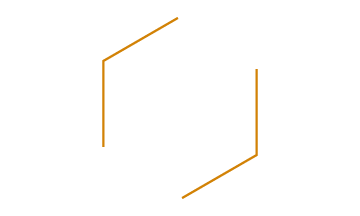Supplemental Material
Author Note
We appreciate the cooperation of Green Bank and Rural Bank of Mabitac in designing and implementing this study. We thank the editor and anonymous reviewers; John Owens and the staff at MABS in the Philippines for help with data and implementation mechanics; and Tomoko Harigaya, Rebecca Hughes, Mark Miller, Megan McGuire, and Junica Soriano for excellent fieldwork. We thank participants at the 2011 Advances with Field Experiments conference and the 2013 IZA/WZB Field Days conference for helpful comments. Financial support from the Bill & Melinda Gates Foundation is gratefully acknowledged. All opinions and errors are our own.
Author Affiliation
Karlan, Department of Economics, Yale University; Morten, Department of Economics, Stanford University; Zinman, Department of Economics, Dartmouth College. Corresponding author’s e-mail: [email protected]
References
1. Cadena, X., & Schoar, A. (2011). Remembering to pay? Reminders vs. financial incentives for loan payments (NBER Working Paper 17020). Retrieved from National Bureau of Economic Research website: http://www.nber.org/papers/w17020.pdf
2. Karlan, D., McConnell, M., Mullainathan, S., & ZInman, J. (2016). Getting to the top of mind: How reminders increase saving. Management Science. http://pubsonline.informs.org/doi/abs/10.1287/mnsc.2015.2296
3. Kast, F., Meier, S., & Pomeranz, D. (2012). Under-Savers Anonymous: Evidence on self-help groups and peer pressure as a savings commitment device (NBER Working Paper 18417). Retrieved from National Bureau of Economic Research website: http://www.nber.org/papers/w18417.pdf
4. Aker, J., & Mbiti, I. (2010). Mobile phones and economic development in Africa. Journal of Economic Perspectives, 24, 207–232.
5. Donner, J. (2008). Research approaches to mobile use in the developing world: A review of the literature. The Information Society: An International Journal, 24, 140–159.
6. Jack, W., & Suri, T. (2011). Mobile money: The economics of M-PESA (NBER Working Paper 16721). Retrieved from National Bureau of Economic Research website: http://www.nber.org/papers/w16721.pdf
7. The World Bank. (2015). World development indicators: Philippines. Retrieved January 11, 2015, from http://databank.worldbank.org/data/reports.aspx?source=2&country=PHL&series=&period=
8. Business Wire. (2010). Research and markets: Philippines—Telecoms, mobile and broadband [Press release]. Retrieved from http://www.businesswire.com/news/home/20100823005660/en/Research-Markets-Philippines—Telecoms-Mobile-Broadband#.VhH46qRU_C4
9. Microfinance Information Exchange. (n.d.). Philippines market profile. Retrieved February 7, 2012, from http://www.mixmarket.org/mfi/country/Philippines
10. Adams, W., Einav, L., & Levin, J. (2009). Liquidity constraints and imperfect information in subprime lending. American Economic Review, 99, 49–84.
11. Karlan, D., & Zinman, J. (2009). Observing unobservables: Identifying information asymmetries with a consumer credit field experiment. Econometrica, 77, 1993–2008. doi:10.3982/ECTA5781
12. Cialdini, R., & Goldstein, N. (2004). Social influence: Compliance and conformity. Annual Review of Psychology, 55, 591–621.
13. Charness, G., & Dufwenberg, M. (2006). Promises and partnerships. Econometrica, 74, 1579–1601.
14. Agarwal, S., Ambrose, B., Chomsisengphet, S., & Liu, C. (2011). The role of soft information in a dynamic contract setting: Evidence from the home equity credit market. Journal of Money, Credit and Banking, 43, 633–654.
15. Boot, A. (2000). Relationship banking: What do we know? Journal of Financial Intermediation, 9, 7–25.
16. Calzolari, G., & Nardotto, M. (2011). Nudging with information: A randomized field experiment (SSRN Scholarly Paper 1924901). Available from Social Science Research Network website: https://sites.google.com/site/mattianardotto/Home/my-research
17. Altmann, S., & Traxler, C. (2014). Nudges at the dentist. European Economic Review, 72 (November), 19–38.
18. Stango, V., & Zinman, J. (2014). Limited and varying consumer attention: Evidence from shocks to the salience of bank overdraft fees. Review of Financial Studies, 27, 990–1030.
19. Alan, S., Cemalcılar, M., Karlan, D., & Zinman, J. (2015). Unshrouding effects on demand for a costly add-on: Evidence from bank overdrafts in Turkey (NBER Working Paper 20956). Available from National Bureau of Economic Research website: http://www.nber.org/papers/w20956
20. Bertrand, M., Karlan, D., Mullainathan, S., Shafir, E., & Zinman, J. (2010). What’s advertising content worth? Evidence from a consumer credit marketing field experiment. Quarterly Journal of Economics, 125, 263–305.
21. Lynch, J. G., Jr. (1982). On the external validity of experiments in consumer research. Journal of Consumer Research, 9, 225–239.
22. Lynch, J. G, Jr. (1999). Theory and external validity. Journal of the Academy of Marketing Science, 27, 367–376.
23. Cook, T. D., & Campbell, D. T. (1979). Quasi-experimentation: Design & analysis issues for field settings. Boston, MA: Houghton Mifflin.
